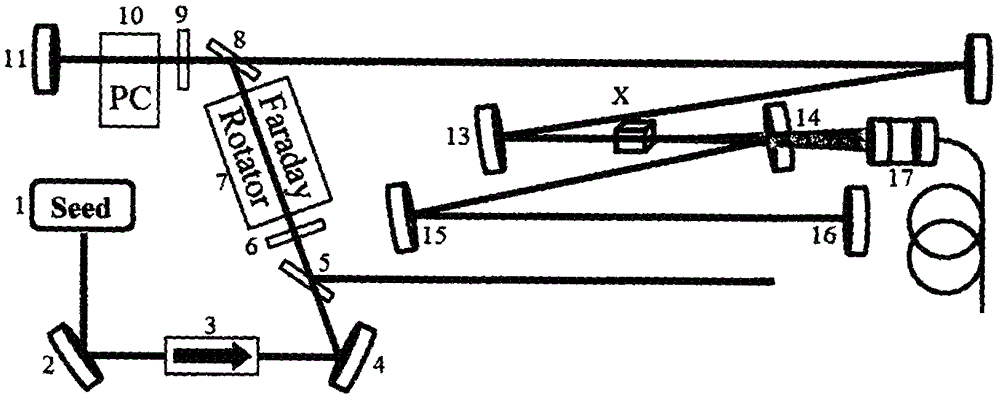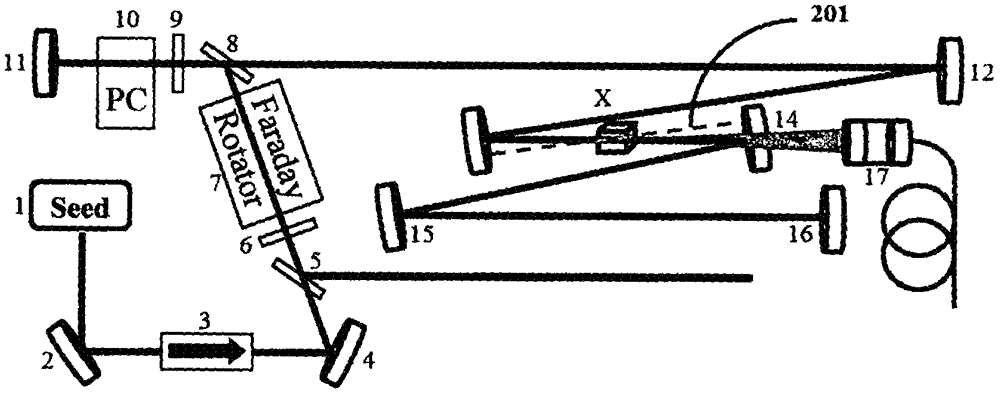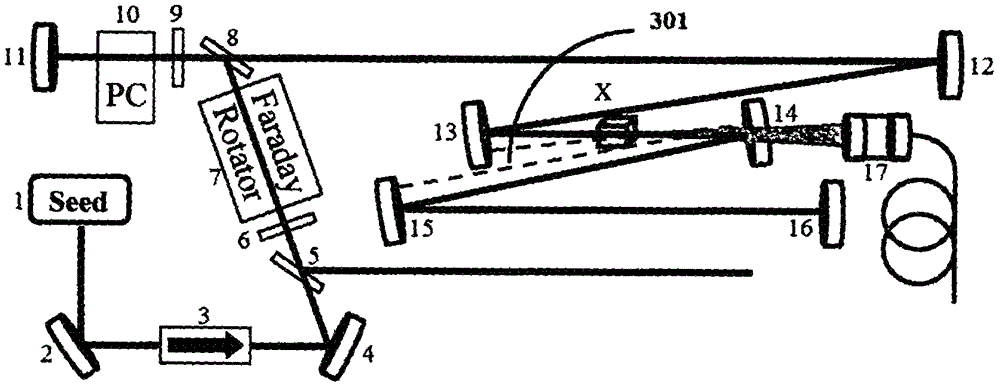Regeneration amplifier with first pulse self-inhibition function
A regenerative amplifier and self-inhibiting technology, which is applied to lasers, phonon exciters, laser components, etc., can solve problems such as inapplicability and increase system complexity, so as to prolong service life, improve laser processing effect, and have a wide range of applications Effect
- Summary
- Abstract
- Description
- Claims
- Application Information
AI Technical Summary
Problems solved by technology
Method used
Image
Examples
Embodiment 1
[0034] figure 2 Shown is a laser regenerative amplifier with the first pulse suppression function. The laser pulse output from the seed source 1 passes through the isolator 3, the wave plate 6, and the rotator 7, and the polarization direction is rotated by 90°. into the regeneration cavity. At this time, the electro-optical switch element 10 is pressurized, and its combination with the wave plate 9 rotates the polarization state of the incident laser light by 90°. When the laser light returns to the polarization beam splitting element 8, it passes through the element, and the laser light is locked in the cavity to go back and forth. The laser travels back and forth to the gain crystal X multiple times in the cavity, and the pulse energy is gradually increased. Then the voltage on the electro-optic switch 9 is changed again, and its combination with the wave plate 8 changes the polarization state of the intracavity laser again. The laser light is reflected from the polarizat...
Embodiment 2
[0037] image 3 Shown is another laser regenerative amplifier with first pulse suppression. The difference from Embodiment 1 is that when the regenerative chamber stops working, parasitic oscillations are generated between the cavity mirror 13, the gain crystal X and the cavity mirrors 14 and 15 (301). Likewise, parasitic oscillations prevent crystal saturation, suppress first pulses, and do not affect output power and energy during normal operation.
PUM
 Login to View More
Login to View More Abstract
Description
Claims
Application Information
 Login to View More
Login to View More - R&D
- Intellectual Property
- Life Sciences
- Materials
- Tech Scout
- Unparalleled Data Quality
- Higher Quality Content
- 60% Fewer Hallucinations
Browse by: Latest US Patents, China's latest patents, Technical Efficacy Thesaurus, Application Domain, Technology Topic, Popular Technical Reports.
© 2025 PatSnap. All rights reserved.Legal|Privacy policy|Modern Slavery Act Transparency Statement|Sitemap|About US| Contact US: help@patsnap.com



